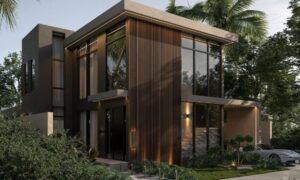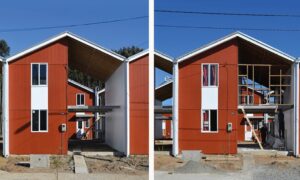In several parts of the world, people who want a safe and decent place to live are having a hard time finding an affordable place to live. The cost of building traditional homes has gone through the roof, making it impossible for many people to own their homes. Luckily, a new and innovative way of building has come up that could change the way we build houses forever. Modular building describes this modern method. In this article, Curt Ranta will talk about modular construction, its benefits, and how it is changing the affordable housing industry.
Whether you’re a builder, an investor, or just someone who needs a new house, this article will teach you important things about this new way of building.
Curt Ranta Lists Benefits of Modular Construction
Modern modular construction entails erecting a structure in stages, or modules, inside a factory or other type of production facility. The modules are then taken to the construction site and put together to make a whole building. The modules are made to fit together like building blocks, and a crane moves them into place to make the whole building. Curt Ranta mentions the major benefits of modular construction below:
- Cost-Effectiveness: Modular construction is often more cost-effective than conventional construction because of its efficiency and speed. Working in a factory can help save a lot of money by cutting down on wasted labor and materials.
- Time Efficiency: Because modular construction is done off-site in a controlled environment, it can be done much faster than traditional construction. This is so because neither inclement weather nor outside distractions like noise or traffic will slow down the construction process.
- Energy Efficiency: Because modular buildings are better insulated, airtight, and made with energy-efficient materials, they are often more energy efficient than traditional buildings. This means lower utility bills and less damage to the environment.
- Quality Control And Durability: Modular buildings are made in a factory environment to exacting standards. This means that they are of higher quality construction and experience fewer issues. This makes the building stronger, so it will last longer and need less maintenance.
- Flexibility And Customization: Because modules are easy to add or take away, modular construction gives you a lot of freedom and customization options. It’s great for projects that need to be flexible and able to grow because of this.
- Environmental Sustainability: Modular construction is often better for the environment than traditional building because it creates less waste and uses fewer materials. The fact that modular building uses less energy is also good for the environment.
<iframe width=”560″ height=”315″ src=”https://www.youtube.com/embed/sW8O2c4siwA” title=”YouTube video player” frameborder=”0″ allow=”accelerometer; autoplay; clipboard-write; encrypted-media; gyroscope; picture-in-picture; web-share” allowfullscreen></iframe>
Challenges and Potential Solutions for Using Modular Construction
Since there aren’t enough affordable homes, modular building is becoming more and more common. But there are a few things that need to be fixed before this way of building can be used to make cheap homes. Curt Ranta expands on what they are below:
-
Wrong Perception
People think that modular buildings are not as good as traditional buildings. It is one of the biggest problems with building cheap homes with modular construction. This idea usually comes from old beliefs about modular building construction and material quality. Modular construction and successful affordable housing projects could solve this problem.
-
Lack of Standardization
Another issue is that there aren’t enough standards in the modular building industry. This makes it harder to compare prices and quality across businesses, which can lead to misunderstandings and additional expenses. Making industry-wide standards for modular construction is one approach to fixing this issue. These standards could include rules for materials, designs, and quality control.
-
Financing
Modular construction projects can also be hard to finance. Lenders who don’t know much about modular building projects may be taking a risk by giving money for them. To fix this, lenders and investors might need to learn more about modular construction and financing for affordable housing.
-
Skill Needed To Make It
The fact that it’s tough to find skilled workers is one problem with modular building. There aren’t enough people who know how to build with modules, which is different from traditional building. One way to help workers get the skills and knowledge they need is to invest money in training programs and apprenticeships.
-
Zoning & Regulations
Lastly, problems with zoning and rules can also affect modular construction projects. Many local and state rules are made for traditional building methods and may not apply to modular building. This can make projects to build affordable homes take longer and cost more money. Working with local and state governments to update rules can make it easier to get permits for modular construction.
Wrapping Up
In the end, modular construction has become a promising way to help solve the problem of not enough affordable homes. But some problems need to be fixed before modular construction can be used for cheap housing. Modular construction can become more affordable with more education, standardisation, financing, training, and changes to the rules. Finally, Curt Ranta concludes that it is a great way to help people who need affordable, and durable housing.



































